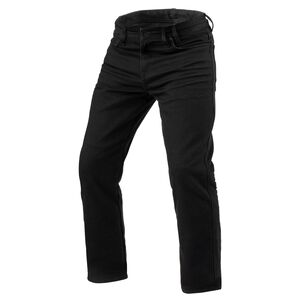Sequels are hard. There’s just no way to spring something unexpected on the audience when they’ve already seen the first movie or listened to the first album. Motorcycles are much the same, and it was always going to be a tough stage to fill for BMW’s R 12 nineT.
This latest nineT was introduced alongside its new fraternal twin, the R 12, a lower, simpler, and cheaper version that carries a waft of cruiser style and feel. But, unlike the base R 12, the new nineT stepped into the shadow of the R nineT, first introduced in 2014 as a way of BMW Motorrad wishing itself a happy 90th birthday.
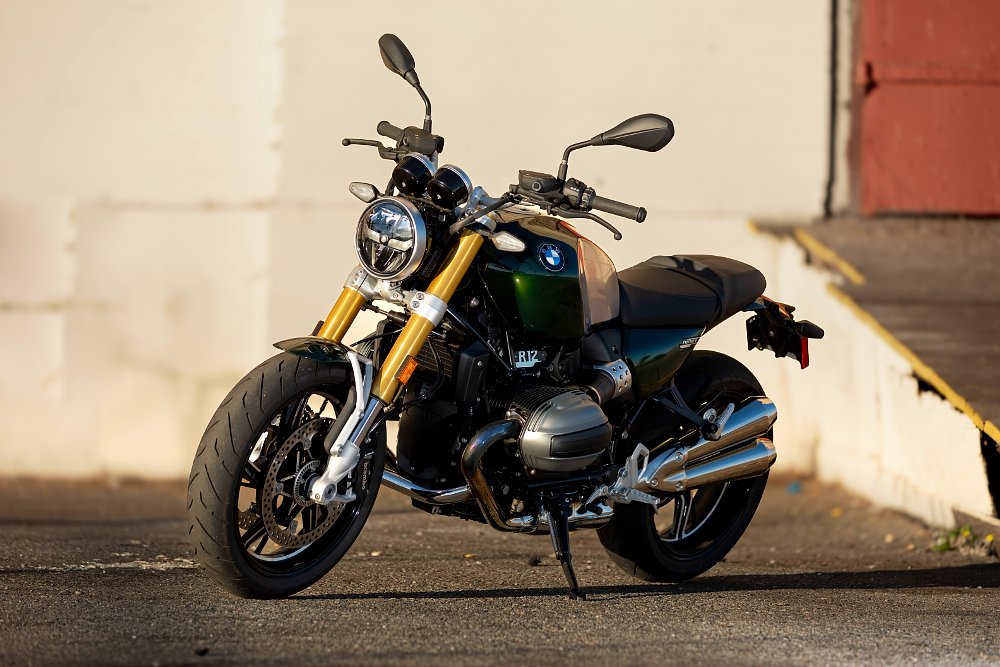
I realized in taking on this review that I haven’t ridden a nineT in many years, and I was surprised to see so much evolution on the spec sheet — the numbers have crept farther over the past 10 years than I thought. Compared to the original nineT that came out in 2014, this new R 12 version has 2.2 more degrees of rake in the front end, which adds 0.3 inches of trail and contributes to a wheelbase that’s 1.4 inches longer.
It’s a little more relaxed, on paper anyway, which makes sense considering the new nineT now shares showroom floors with the cruiser-esque R 12 that Dustin reviewed recently. Maybe that’s one reason the new nineT actually lists a seat height that’s 10 millimeters taller than the 2014 bike, to help differentiate it from its low-slung stablemate.
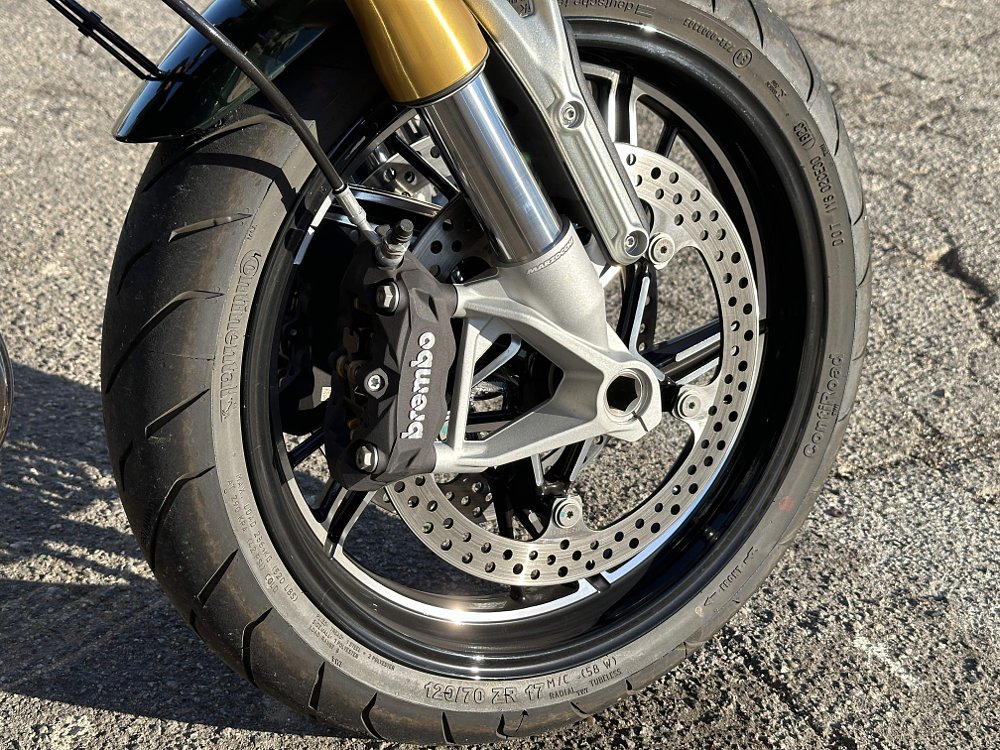
Of course all of those differences are nothing compared to the similarities between the 2024 R 12 nineT and the 2014 bike. The engine and powertrain are largely the same, in so much as the bore and stroke numbers are identical, as are the transmission ratios. Suspension travel is the same 4.7 inches, too. Numbers aside, it’s probably not going to take much to convince you that the new nineT is reminiscent of the old one. It’s a pretty clear evolution.
Riding between the lines
Climbing aboard for a commute or a Sunday ride, it does feel in many ways like more of the same. It shakes and thumps at idle in a way that the modern, water-cooled BMW boxers don’t and feels quite different to sit on than most other standard or naked bikes. The handlebar is wide and the footpegs are probably a little farther forward than you’d expect.
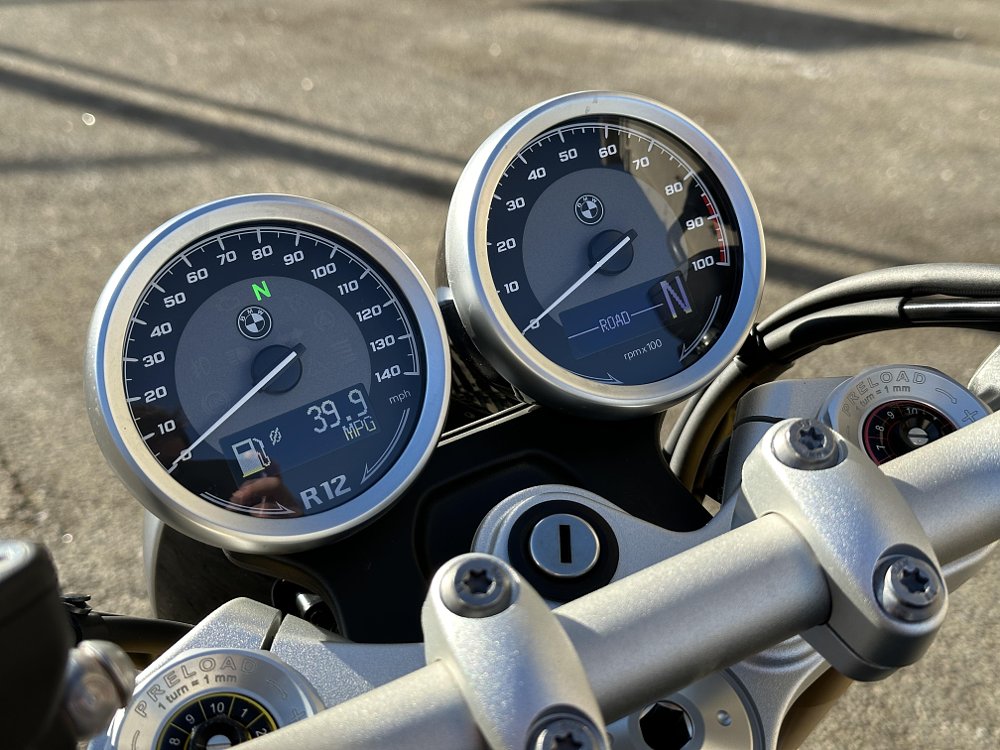
A handsome pair of analog gauges stares back at you from the cockpit, each with a simple LCD screen built in to show auxiliary information. The switchgear has gotten slightly more complex over the years, now including cruise control and the multi-controller wheel on the left, and the eCall SOS button on the right. Otherwise, the rider’s view from the saddle is spare and clean, as it should be with a bike like this.
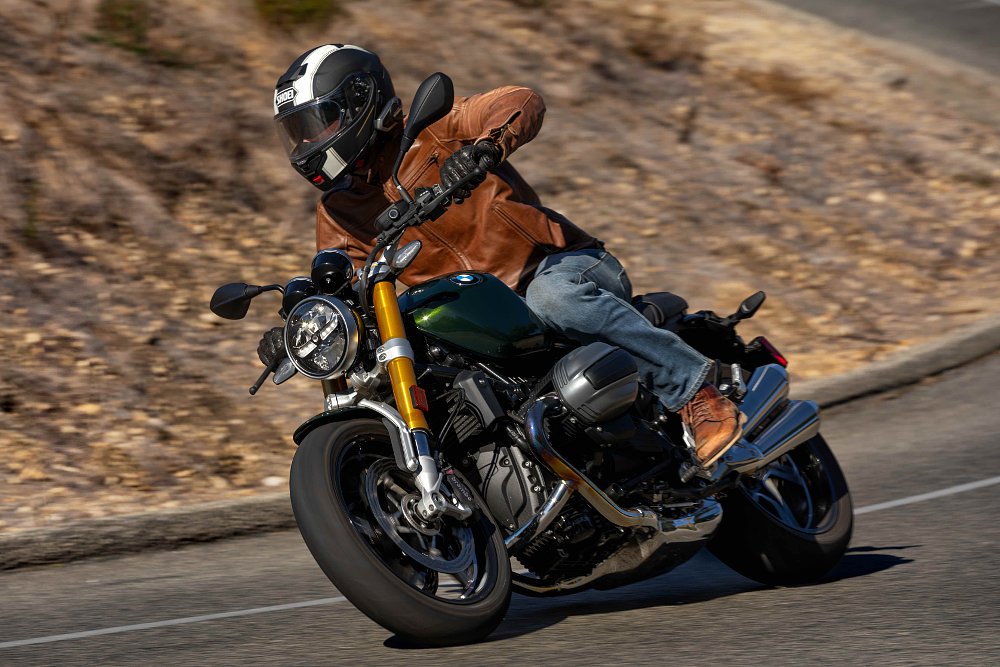
Settling into a favorite set of curves, the new nineT also has the same wonderful balance and poise as the original. It rolls from side to side with so little drama, I’m always left wondering how. Probably an effect of the boxer engine keeping weight close to the ground, and also the bike being fairly low in general. Not to a fault, though, like Dustin pointed out about the cruiser sibling — there’s plenty of fun to be had before the peg feelers drag on the nineT.
Overall, it feels less than the original in a few ways. The suspension on the R 12 nineT is more harsh than I remember from the first-gen bike, especially the shock. It’s notable that the spec of the fork has changed to some extent, too; still fully adjustable but measuring at 45 millimeters instead of 46 certainly suggests that some new compromises were made.
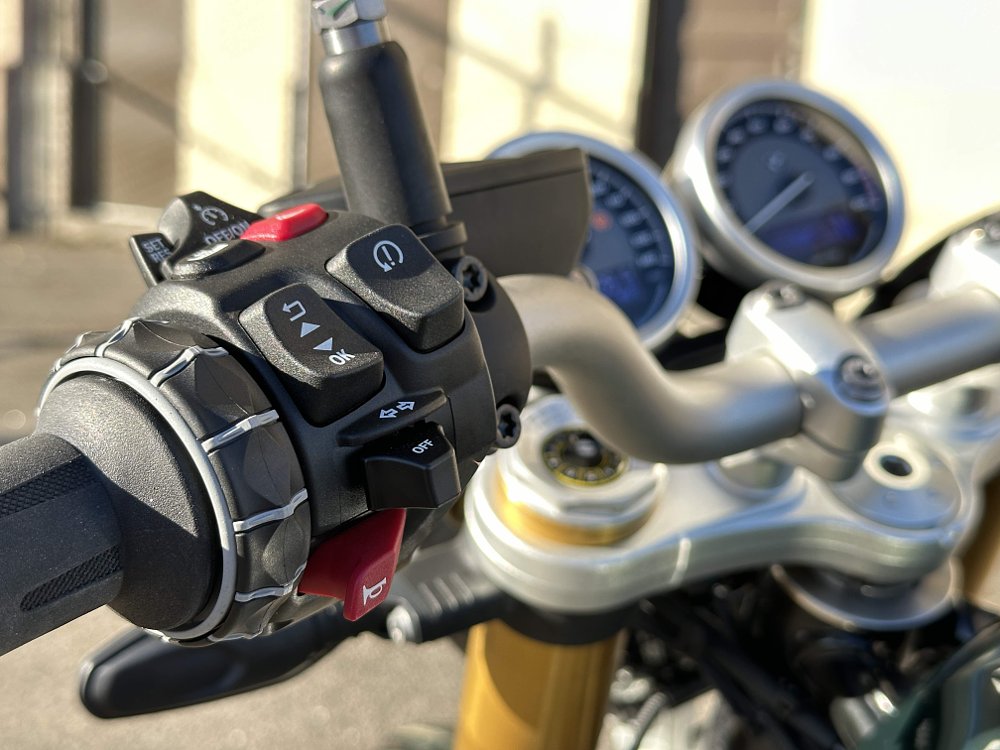
An update to the shock in 2021 aimed to add more comfort with travel-dependent damping, and even if it worked I wonder if it didn’t rob a bit of directness and purity from the feel of the chassis. Even so, I still find myself drifting to the end of any twisty road with a smile on my face. The handling is just so immediate and willing for a bike that weighs just about 500 pounds.
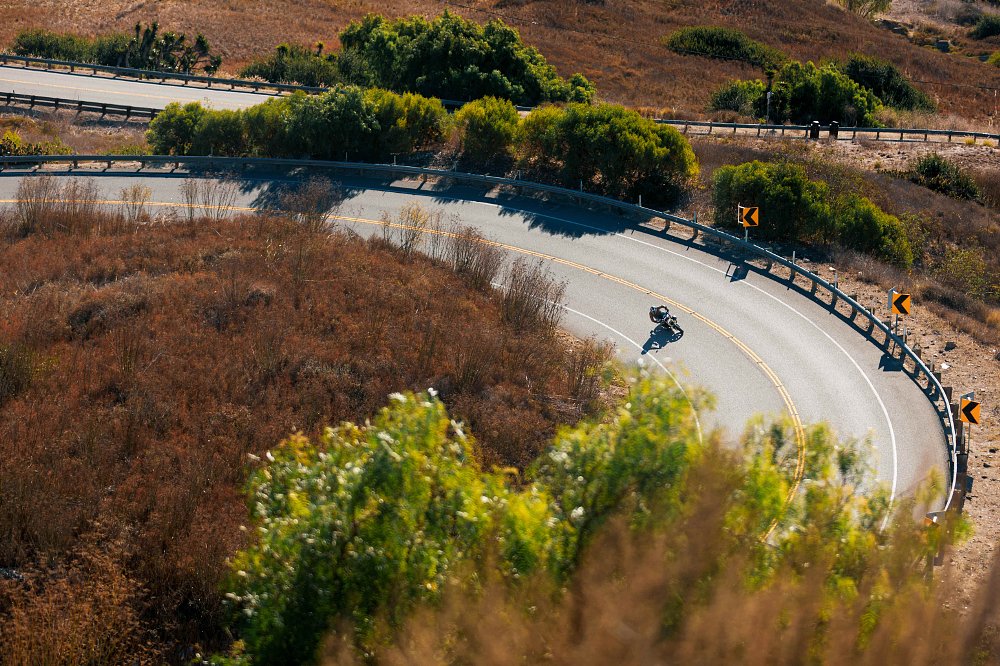
More damning criticisms can be found in the few little quirks and characteristics that hint at the nineT’s luxury being dumbed down. The two, classic gauges are soft-mounted, presumably to isolate vibes and keep the units (or mounts) from breaking. As a result they often flop around like crazy, depending on the frequency of the bumps in the road.
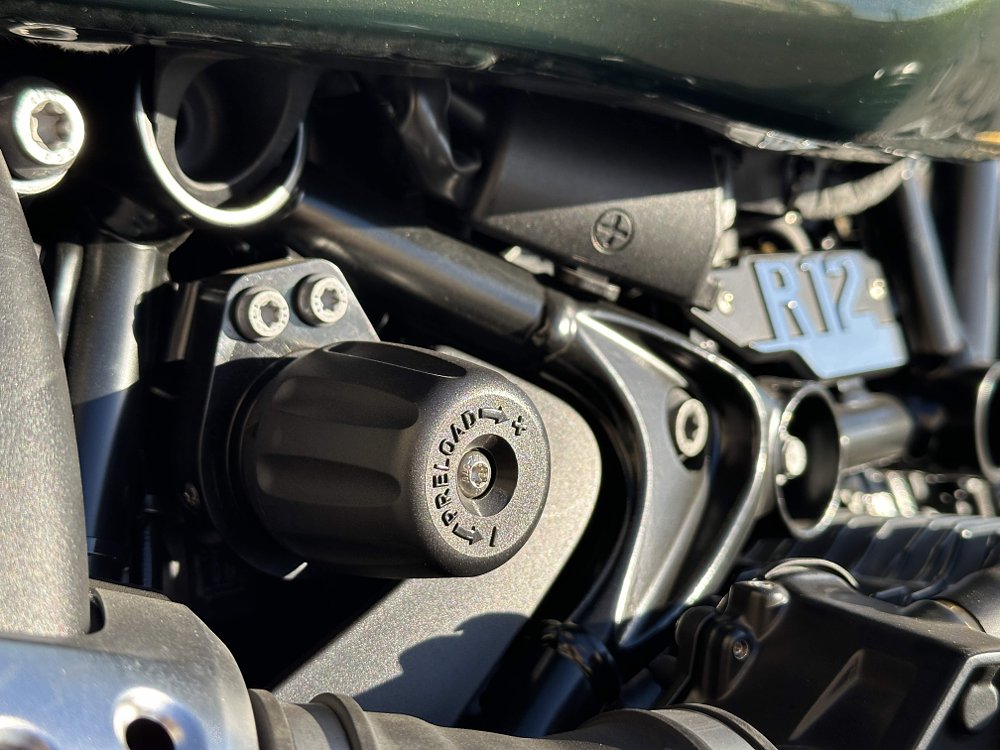
Another oddity is the dash being slow to respond, both to button presses on the switchgear and also the tachometer being a few steps behind what the engine is doing. Rev the engine, then watch the tach jump a beat later, like the signal is coming from a satellite. It’s odd, and makes the bike feel a little less sharp.
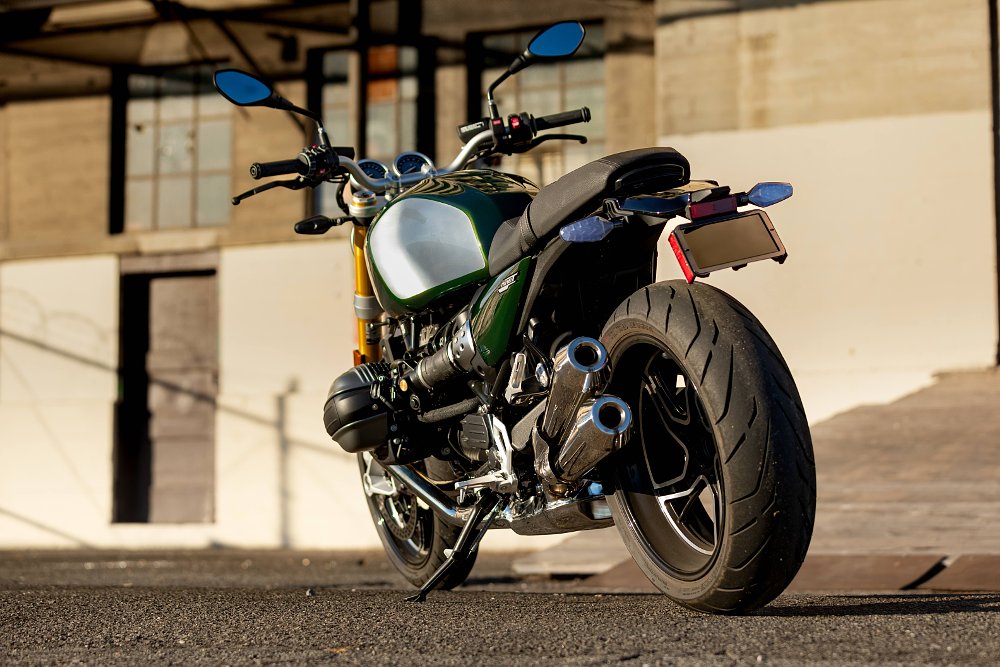
It’s a good motorcycle, arguably better than any nineT model previously, for being more refined. Accelerating up an on ramp to my local multi-lane freeway, the R 12 nineT powerplant feels smooth. Likewise at cruising speed. It’s not as cleansed of mechanical spirit as most modern mills, but it feels more polished than this oil-cooled version of BMW’s boxer ever has, I think.
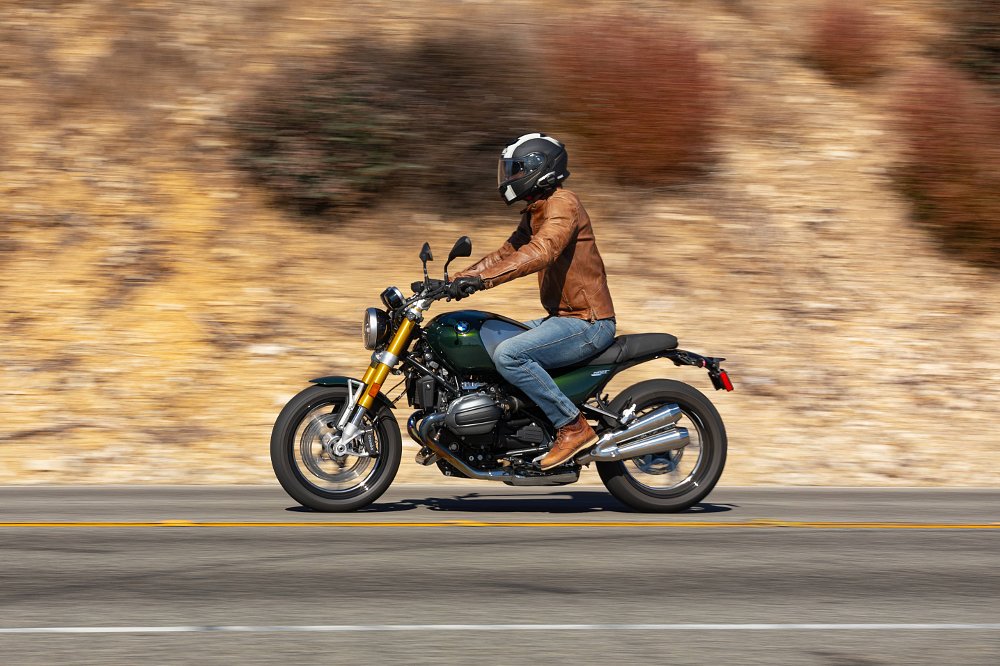
Another way to say it is that there’s a bit of an edge missing. The R 12 nineT jumps to a frantic-feeling 2,200 rpm idle when it first fires up, not as agricultural and aloof as the old bike always seemed to me. When the engine is still cold the fueling just off idle is oddly muted and slow, which Dustin thinks is a remnant of an especially lean mixture at low rpm. I’m inclined to agree.
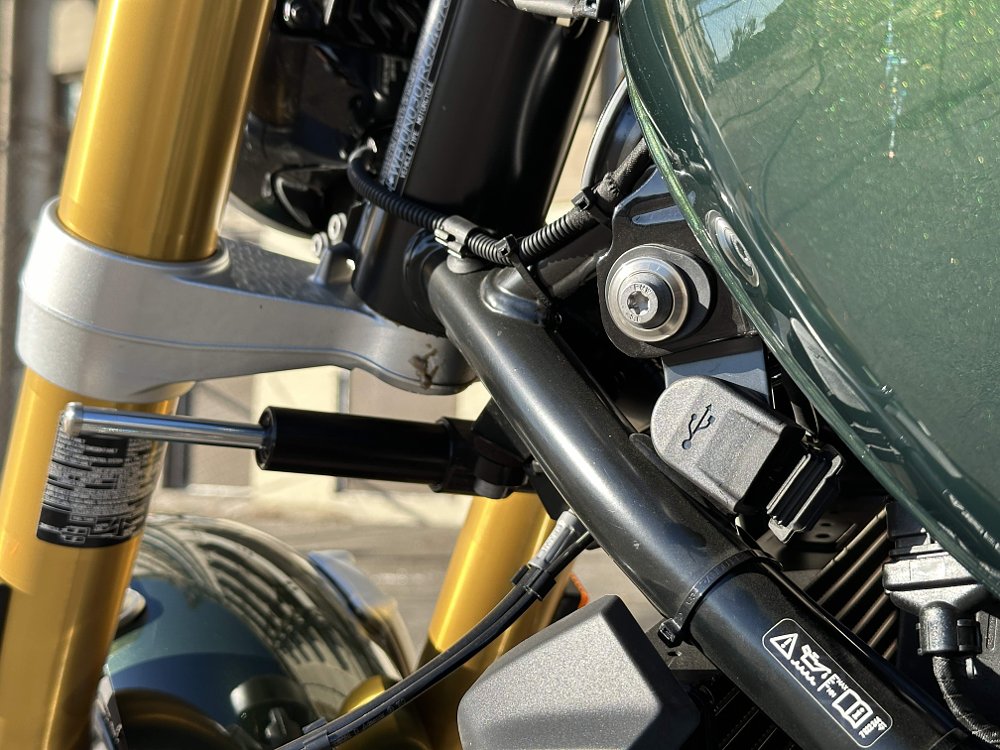
It sounds quieter than past nineTs, to my ear, and seems to be engineered to be a slightly more subdued experience than the strange, parts-bin custom that the BMW factory released a decade ago. Some of that has a clear explanation. Stricter Euro regulations have led to revamps to the cylinder heads (2021) and efficiencies in tuning (2024), but the bike making 109 horsepower instead of 110 isn’t the point. It’s the fact that there’s less vigor and spirit on board that makes an impact.
Reading between the lines
Beyond that, I can’t help but be a little cynical of the nineT’s “R 12” rebrand and redesign. BMW openly admitted that the first-gen nineT ended up capturing an unexpected number of new riders. Ultimately, that original bike, with its high-spec suspension and brakes, was more machine than many of the buyers cared to own. BMW reacted to that by building down from the premium bike, in the form of the Pure, Racer, and Scrambler. Lesser nineTs in componentry and price, which arguably served the market more appropriately.
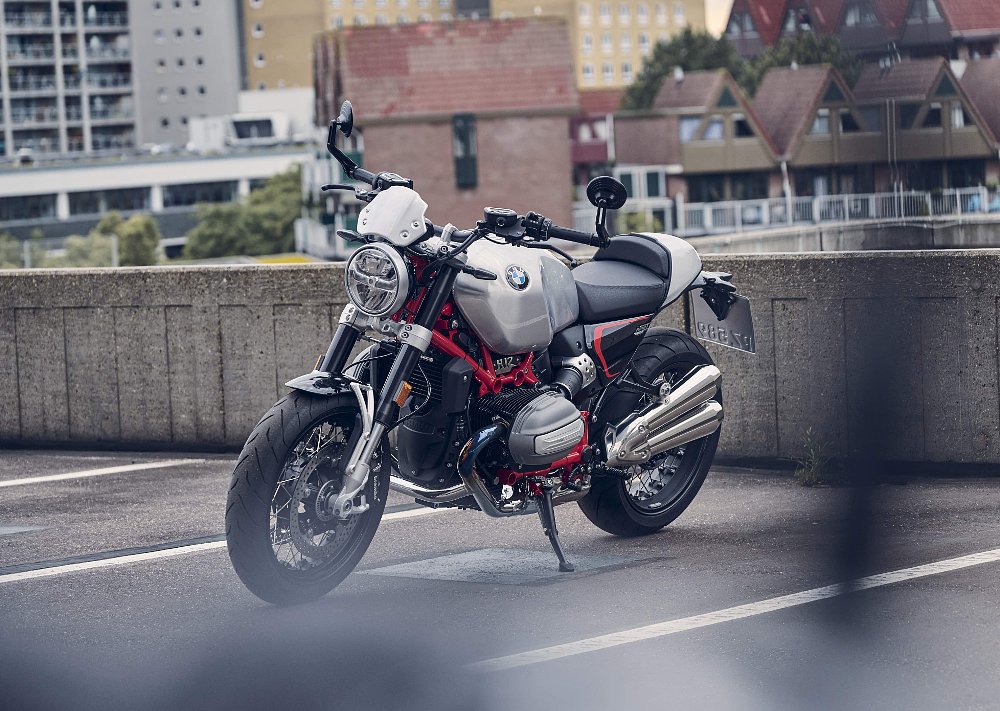
This new R 12 nineT seems to lean that way, too. It has the same well engineered foundation as the OG nineT, but it’s less aggressive — the brake rotors are 10 millimeters smaller, it’s a few pounds heavier, and the chassis geometry is more slack. To focus on a couple of specific things that encapsulate my disappointment in the new nineT, look at the gearbox and the gas tank.
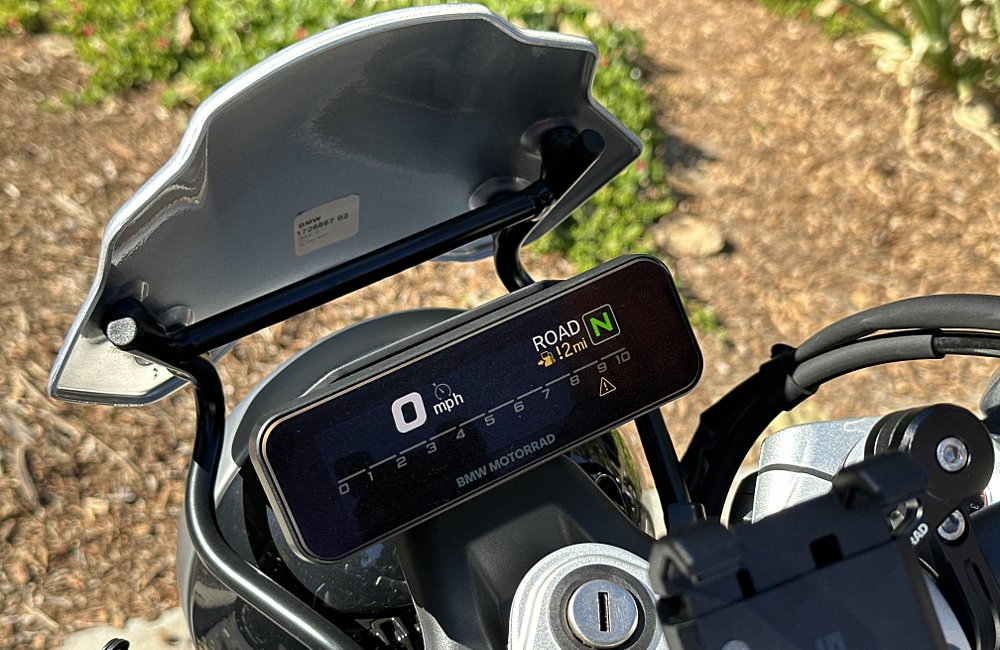
As much as I love a quickshifter, this one isn’t great. Like Dustin said about the R 12, popping from one gear up to the next, at certain rpms, jolts the bike forward awkwardly. The gear ratios aren’t especially wide, the engine just has too much flywheel effect (or ignition isn’t retarded enough) for it to work smoothly. It’s better from third gear up, but I took to avoiding the quickshifter altogether when going from first to second. It just doesn’t suit the machine, or how it’s supposed to be ridden. Considering what the nineT is, I’d prefer to bask in the character of a slightly old-fashioned gearbox than have yet more seamless shifting.
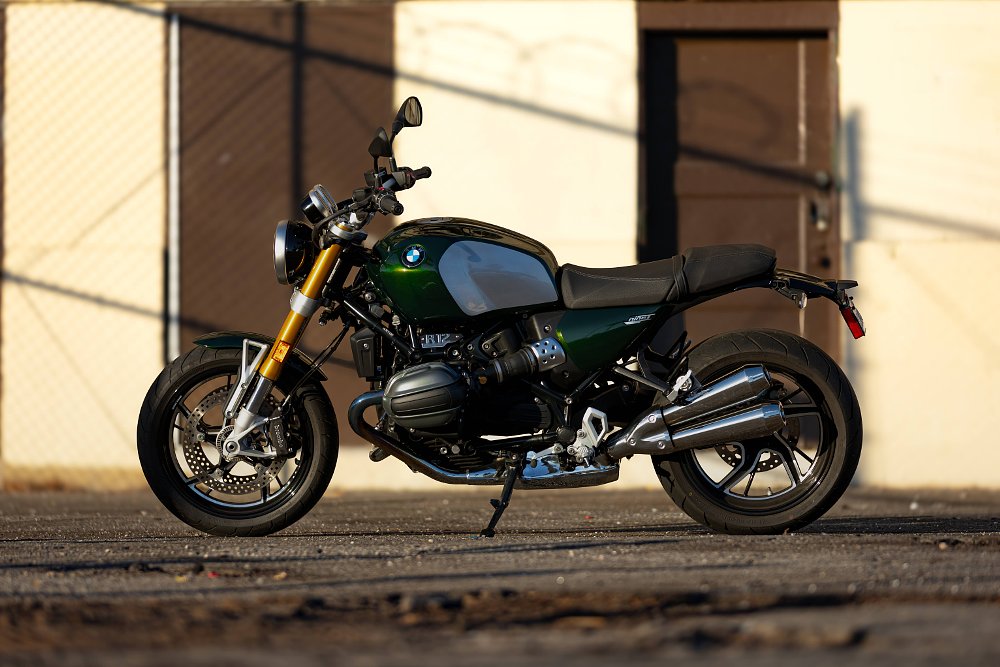
The gas tank on our test bike is beautiful. When the sun catches the San Remo Green it sparkles with a tiny galaxy of metal flakes, and the swaths of brushed aluminum in the knee cutouts catch the light beautifully. However. Gone is the intentional and garish weld down the middle of the tank that previous nineTs offered as an option, which was such a lovely touch. It always read like a subtle middle finger from the nineT to anyone who was looking, that the whole bike was a little raw and wasn’t about to apologize.
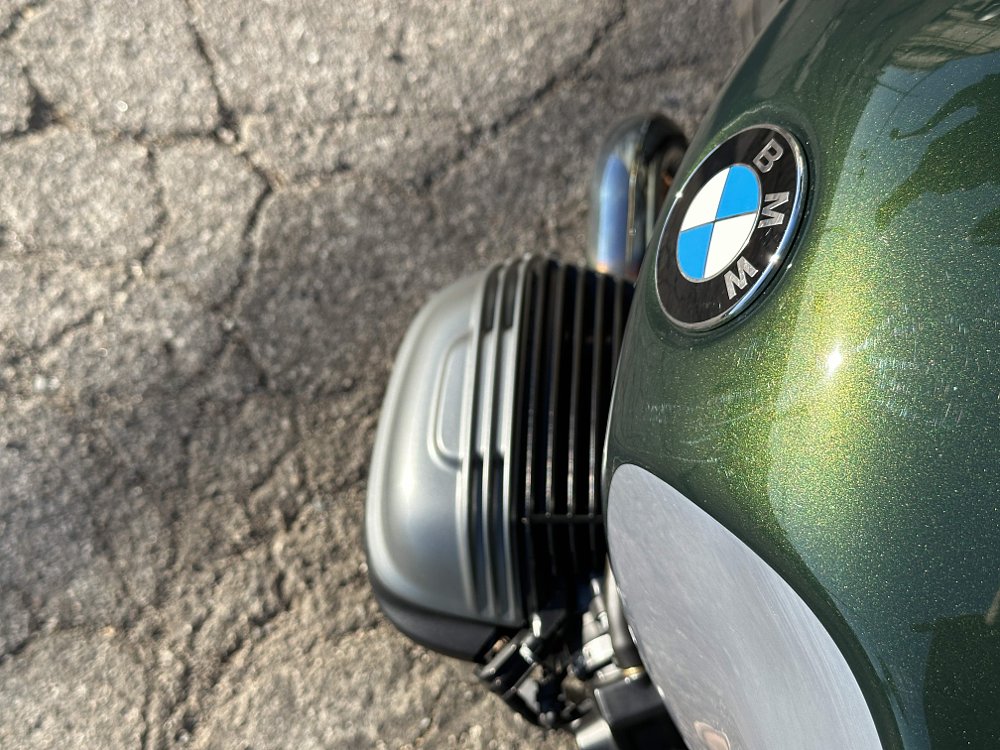
Now that I’ve said the bike would be better by simply embracing the things about it that make it different from other motorcycles, I’ll amend my use of the word “disappointment.” That’s not really fair. Let’s call it an irk, or maybe a chagrin. It just seems clear that the 90th-anniversary machine that debuted in 2014 was a truer celebration of quality and heritage, whereas the new bike is a colder calculation of how to ride the wave that the first bike made.
Maybe I'm a little deflated that the R 12 nineT feels duller than the nineT I remember from yester-decade. But, don't let that distract you fully from the machine that it still is — elemental and premium, with graceful performance and a strong flavor that most bikes can’t match. Even if it’s not surprising anymore, the nineT remains a lovely distillation of motorcycling magic.
| 2024 BMW R 12 nineT | |
|---|---|
| Price (MSRP) | $16,295 ($19,359 as tested) |
| Engine | 1,170 cc, air-cooled, eight-valve, horizontally opposed twin |
|
Transmission, final drive |
Six-speed, shaft |
| Claimed horsepower | 109 hp @ 7,000 rpm |
| Claimed torque | 85 foot-pounds @ 6,500 rpm |
| Frame | Steel-tube trellis |
| Front suspension | 45 mm fork, adjustable for spring preload, compression and rebound damping; 4.7 inches of travel |
| Rear suspension | Single shock, adjustable for spring preload, rebound damping; 4.7 inches of travel |
| Front brake | Brembo four-piston calipers, 310 mm discs with ABS |
| Rear brake | Two-piston caliper, 265 mm disc with ABS |
| Rake, trail | 27.7 degrees, 4.3 inches |
| Wheelbase | 59.5 inches |
| Seat height | 31.3 inches |
| Fuel capacity | 4.2 gallons |
| Tires | Continental ContiRoad; 120/70ZR17 front, 180/55ZR17 rear |
| Measured weight | 490 pounds |
| Available | Now |
| Warranty | 36 months / 36,000 miles |
| More info | bmwmotorcycles.com |
















